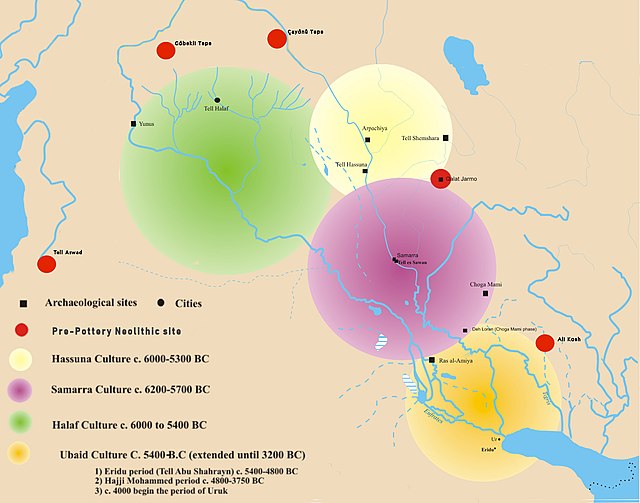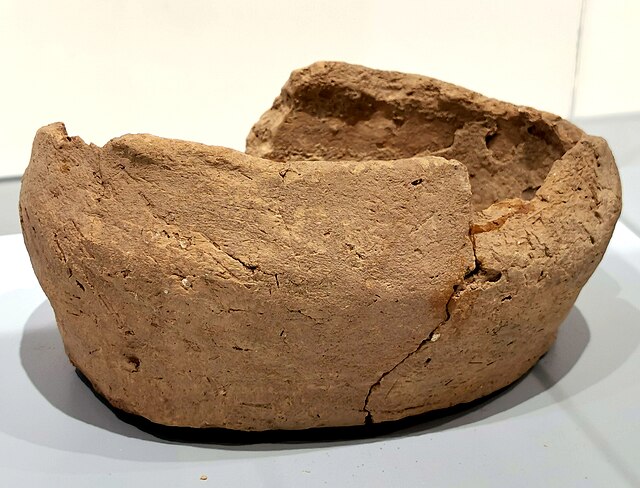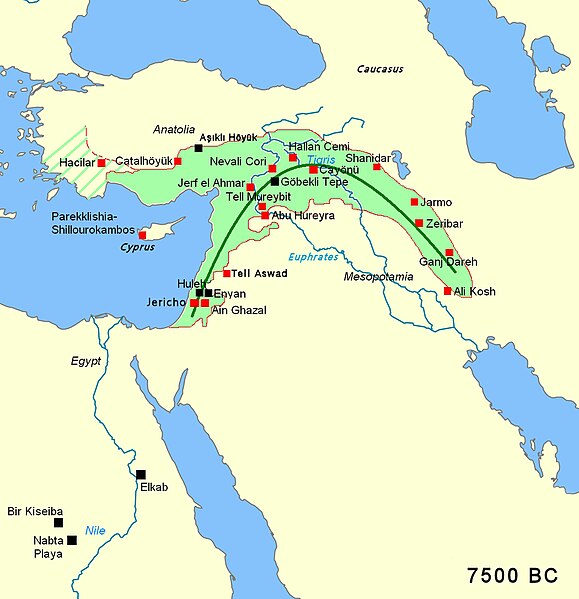In the archaeology of Southwest Asia, the Late Neolithic, also known as the Ceramic Neolithic or Pottery Neolithic, is the final part of the Neolithic period, following on from the Pre-Pottery Neolithic and preceding the Chalcolithic. It is sometimes further divided into Pottery Neolithic A (PNA) and Pottery Neolithic B (PNB) phases.
After the initial Pre-Pottery Neolithic phase from northwestern Mesopotamia to Jarmo (red dots, circa 7500 BCE), the Pottery Neolithic culture of Mesopotamia in the 7th–5th millennium BCE was centered around the Hassuna culture in the north, the Halaf culture in the northwest, the Samarra culture in central Mesopotamia and the Ubaid culture in the southeast, which later expanded to encompass the whole region.
Yarmukian pottery vessel, Sha'ar HaGolan.
Pottery bowl from Jarmo, Mesopotamia, 7100-5800 BCE.
Jar decorated with diverse geometric patterns; 4900-4300 BC; ceramic; by Halaf culture; Erbil Civilization Museum (Erbil, Iraq)
The Pre-Pottery Neolithic (PPN) represents the early Neolithic in the Levantine and upper Mesopotamian region of the Fertile Crescent, dating to c. 12,000 – c. 8,500 years ago,. It succeeds the Natufian culture of the Epipalaeolithic Near East, as the domestication of plants and animals was in its formative stages, having possibly been induced by the Younger Dryas.
Area of the Fertile Crescent, c. 7500 BC, with main Pre-Pottery Neolithic sites. The area of Mesopotamia proper was not yet settled by humans.
Sculpture of a predatory animal, Göbekli Tepe, circa 9000 BC
Urfa Man, c. 9000 BC. Şanlıurfa Archaeology and Mosaic Museum.
Footed bowl in granite, Syria, end of 8th millennium BC.








